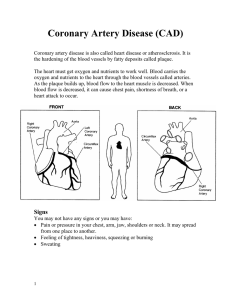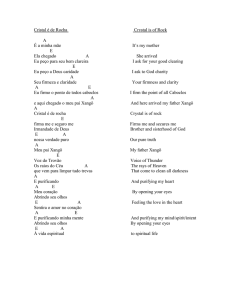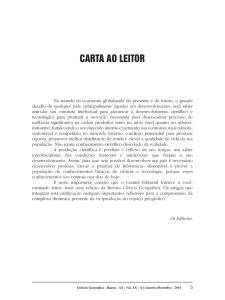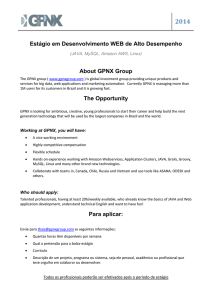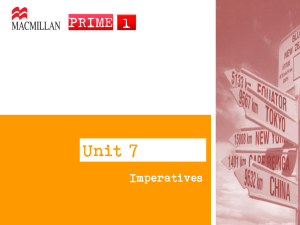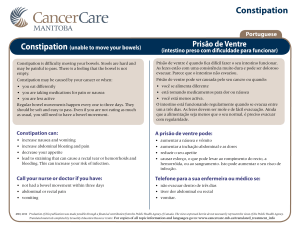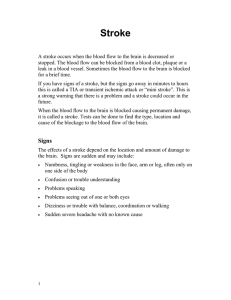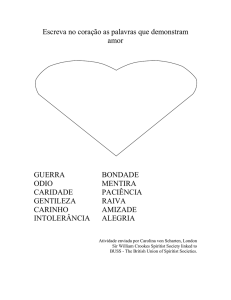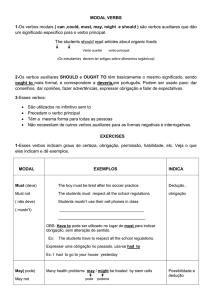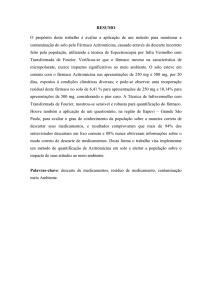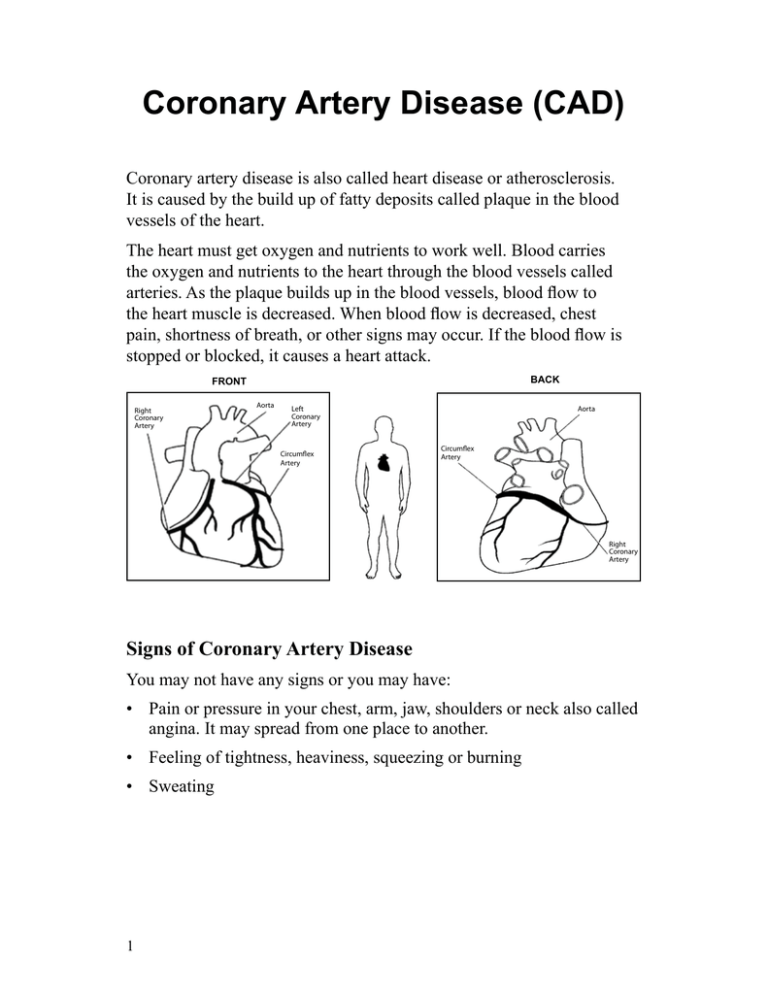
Coronary Artery Disease (CAD)
Coronary artery disease is also called heart disease or atherosclerosis.
It is caused by the build up of fatty deposits called plaque in the blood
vessels of the heart.
The heart must get oxygen and nutrients to work well. Blood carries
the oxygen and nutrients to the heart through the blood vessels called
arteries. As the plaque builds up in the blood vessels, blood flow to
the heart muscle is decreased. When blood flow is decreased, chest
pain, shortness of breath, or other signs may occur. If the blood flow is
stopped or blocked, it causes a heart attack.
BACK
FRONT
Right
Coronary
Artery
Aorta
Aorta
Left
Coronary
Artery
Circumflex
Artery
Circumflex
Artery
Right
Coronary
Artery
Signs of Coronary Artery Disease
You may not have any signs or you may have:
• Pain or pressure in your chest, arm, jaw, shoulders or neck also called
angina. It may spread from one place to another.
• Feeling of tightness, heaviness, squeezing or burning
• Sweating
1
Doença arterial coronariana
(DAC)
A doença arterial coronariana também é chamada de doença cardíaca
ou aterosclerose. É causada pelo acúmulo de depósitos de gordura
chamados de placas nos vasos sanguíneos do coração.
O coração precisa receber oxigênio e nutrientes para que funcione bem.
O sangue carrega o oxigênio e os nutrientes para o coração através de
vasos sanguíneos chamados de artérias. À medida que a placa se forma
nos vasos sanguíneos, o fluxo de sangue para o músculo cardíaco é
reduzido. A redução no fluxo de sangue pode provocar dor no peito,
falta de ar ou outros sinais. A interrupção ou bloqueamento do fluxo de
sangue causa um ataque cardíaco.
ATRÁS
FRENTE
Artéria
coronariana
direita
Aorta
Aorta
Artéria
coronariana
esquerda
Artéria
circunflexa
Artéria
circunflexa
Artéria
coronariana
direita
Sinais de doença arterial coronariana
Você poderá não apresentar nenhum sinal ou apresentar os sinais abaixo:
• Dor ou pressão no peito, braço, mandíbula, ombros ou pescoço
também chamada de angina. A dor pode irradiar de um local para
outro.
• Sensação de aperto, peso, compressão ou queimação
• Sudorese
Coronary Artery Disease. Portuguese.
1
• Shortness of breath
• Nausea or vomiting
• Abdominal pain
• Feeling very tired, dizzy or faint
Call 911 if you have any of these signs.
Risk Factors
You are at higher risk for getting coronary artery disease
if you:
• Have a family history of the disease
• Have high cholesterol, diabetes or high blood pressure
• Smoke or use tobacco
• Are inactive
• Have stress
• Are overweight
Changing even one risk factor can improve your heart health. You can
prevent the disease from getting worse and may even help to improve it.
Your Care
If your doctor thinks that you have coronary artery disease, you may
have tests such as:
• An electrocardiogram (ECG or EKG) to check the electrical
activity of your heart.
• A cardiac magnetic resonance imaging test (MRI) to take pictures
of how well your heart is working.
• A stress test to look for problems with your heart’s rate, rhythm or
electrical activity. Blood pressure and signs such as shortness of
breath or angina are also checked.
2
• Falta de ar
• Náuseas ou vômitos
• Dor abdominal
• Sensação de muito cansaço, tontura ou como se fosse desmaiar
Ligue para emergência (911) se você apresentar algum desses sinais.
Fatores de risco
Seu risco de desenvolver uma doença arterial coronariana será maior se
você:
• Tiver história familiar da doença
• Tiver colesterol alto, diabetes ou pressão alta
• Fumar ou usar tabaco
• For sedentário
• Estiver estressado
• Estiver acima do peso
Mudar apenas um fator de risco pode melhorar a saúde do seu coração.
Você pode prevenir o agravamento da doença e pode até mesmo ajudar a
melhorá-la.
Cuidados necessários
Se o seu médico achar que você tem doença arterial coronariana, ele
pode pedir os seguintes testes:
• Um eletrocardiograma (ECG ou EKG) para fazer um registro da
atividade elétrica do seu coração.
• Um teste de ressonância magnética (MRI) para fotografar o
funcionamento do seu coração.
• Um teste de estresse para verificar a frequência, ritmo e atividade
elétrica cardíaca. Pressão sanguínea e sinais como falta de ar ou
angina também são verificados.
Coronary Artery Disease. Portuguese.
2
• An echocardiogram to see the size and shape of your heart and how
well it is working.
• A chest x-ray to check your heart, blood vessels and lungs.
• Blood tests to check levels of fats, cholesterol, sugar and proteins in
your blood.
If tests show that you are likely to have CAD, other tests or procedures
may be done to treat the disease. The goal is to improve blood flow to
your heart muscle and decrease your risk of heart attack. Treatment may
include:
• Medicines
• Exercise
• A low fat diet
• Procedures or surgery
• A cardiac rehab program
No matter what type of treatment is done, it does not “cure” the disease.
You need to change your risk factors and follow your care plan.
Talk to your doctor about your care or any questions you may have.
2005 – 2/2011 Health Information Translations
Unless otherwise stated, user may print or download information from www.healthinfotranslations.org for personal, non-commercial use only. The medical information
found on this website should not be used in place of a consultation with your doctor or other health care provider. You should always seek the advice of your doctor or
other qualified health care provider before you start or stop any treatment or with any questions you may have about a medical condition. The Ohio State University
Medical Center, Mount Carmel Health System, OhioHealth and Nationwide Children’s Hospital are not responsible for injuries or damages you may incur as a result of
your stopping medical treatment or your failure to obtain medical treatment.
3
• Um ecocardiograma para verificar o tamanho e formato do seu
coração e como ele está funcionando.
• Um raio X do tórax para verificar o coração, vasos sanguíneos e
pulmões.
• Exames de sangue para verificar níveis de gordura, colesterol, açúcar
e proteínas no sangue.
Se os testes mostrarem a possibilidade de você ter DAC, outros testes ou
procedimentos podem ser realizados para tratar da doença. O objetivo
do tratamento é melhorar o fluxo de sangue para o músculo cardíaco e
diminuir seu risco de um ataque cardíaco. O tratamento pode incluir:
• Medicamentos
• Exercícios
• Dieta com baixo teor de gordura
• Procedimentos ou cirurgia
• Um programa de reabilitação cardíaca
Nenhum desses tratamentos “cura” a doença. Será necessário mudar os
fatores de risco e seguir seu plano de tratamento.
Converse com seu médico sobre o tratamento ou sobre quaisquer
dúvidas que tiver.
2005 – 2/2011 Health Information Translations
Unless otherwise stated, user may print or download information from www.healthinfotranslations.org for personal, non-commercial use only. The medical information
found on this website should not be used in place of a consultation with your doctor or other health care provider. You should always seek the advice of your doctor or
other qualified health care provider before you start or stop any treatment or with any questions you may have about a medical condition. The Ohio State University
Medical Center, Mount Carmel Health System, OhioHealth and Nationwide Children’s Hospital are not responsible for injuries or damages you may incur as a result of
your stopping medical treatment or your failure to obtain medical treatment.
Coronary Artery Disease. Portuguese.
3

